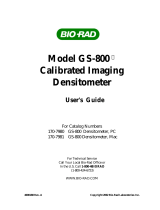
DTP34 DENSITOMETER
CE DECLARATION
Manufacturer's Name: X-Rite, Incorporated
Manufacturer's Address: 3100 44
th
Street, S.W.
Grandville, Michigan
U.S.A.
Model Name: Densitometer
Model No.: DTP34
Directive(s) Conformance: EMC 89/336/EEC LVD 73/23/EEC
Federal Communications Commission Notice
This equipment has been tested and found to comply with the limits for a Class A digital device, pursuant to Part 15 of
the FCC Rules. These limits are designed to provide reasonable protection against harmful interference when the
equipment is operated in a commercial environment. This equipment generates, uses, and can radiate radio frequency
energy and, if not installed and used in accordance with the instruction manual, may cause harmful interference to radio
communications. Operation of this equipment in a residential area is likely to cause harmful interference in which case
the user will be required to correct the interference at his own expense.
NOTE: Shielded interface cables must be used in order to maintain compliance with the desired FCC and European
emission requirements.
Industry Canada Compliance Statement
This Class A digital apparatus meets all requirements of the Canadian Interference-Causing Equipment Regulations.
Cet appareil numérique de la classe A respecte toutes les exigences du Règlement sur le matériel brouilleur du Canada.
AVERTISSEMENT : Des câbles d'interface blindés doivent être utilisés afin de se conformer aux règlements
européens et FCC (USA)sur l'émission.
Proprietary Notice
The information contained in this manual is derived from patent and proprietary data of
X-Rite, Incorporated. The contents of this manual are the property of X-Rite, Incorporated and are copyrighted. Any
reproduction in whole or part is strictly prohibited. Publication of this information does not imply any rights to
reproduce or use this manual for any purpose other than installing, operating, or maintaining this instrument. No part of
this manual may be reproduced, transcribed, transmitted, stored in a retrieval system, or translated into any language or
computer language, in any form or by any means, electronic, magnetic, mechanical, optical, manual, or otherwise,
without the prior written permission of an officer of X-Rite, Incorporated.
This product is covered by one or more of the following U.S. Patent: 4,591,978 5,015,098 5,062,714 and patents
pending. Foreign patent numbers provided on request.
Copyright © 2001 by X-Rite, Incorporated
“ALL RIGHTS RESERVED”
X-Rite® is a registered trademark of X-Rite, Incorporated. All other logos, brand names, and product names mentioned
are the properties of their respective holders.
Warranty Information
X-Rite, Incorporated warrants each instrument manufactured to be free of defects in material and workmanship for a
period of twelve months. If the fault has been caused by misuse or abnormal conditions of operation, repairs will be
billed at a nominal cost. In this case, an estimate will be submitted before work is started, if requested. The unit shall be
returned with transportation charges prepaid.
THERE ARE NO WARRANTIES OF MERCHANTABILITY OR FITNESS. THIS WARRANTY OBLIGATION IS
LIMITED TO SERVICING THE UNIT RETURNED TO X-RITE, INCORPORATED OR AN AUTHORIZED
SERVICE DEALER FOR THAT PURPOSE.
X-Rite, Incorporated offers a repair program for instruments out of warranty. For more information, contact X-Rite
Customer Service Department. Always include serial number in any correspondence concerning the unit. The serial
number is located on the bottom plate of the instrument.





















